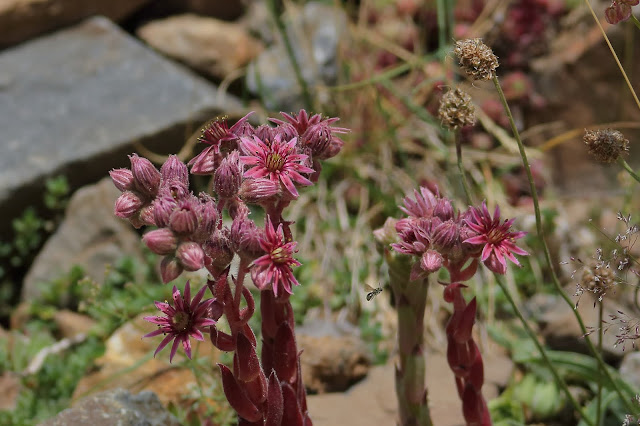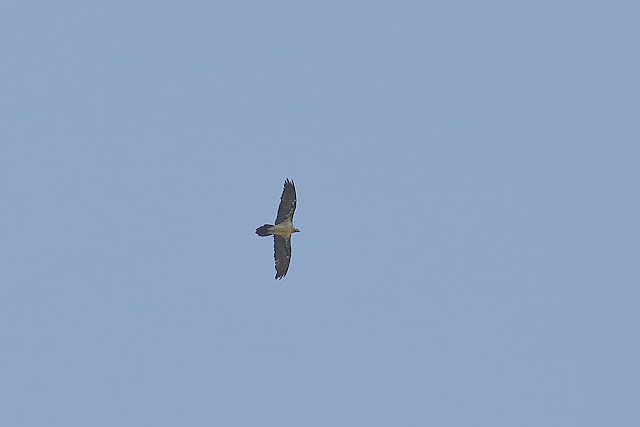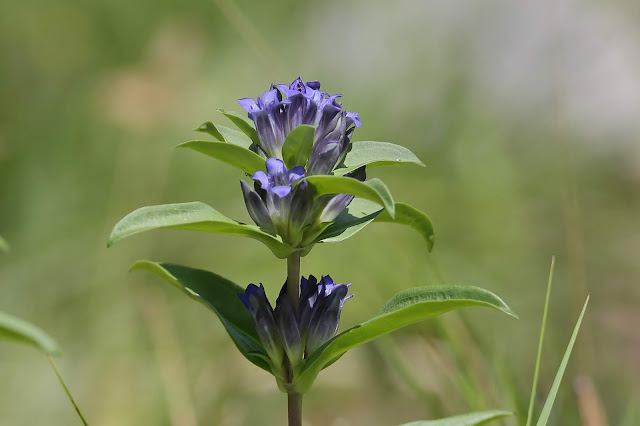Hola una vez más.
Hi again.
En el siguiente enlace podéis ver nuestros próximos viajes fotográficos y de observación de aves y mamíferos nacionales y al extranjero. Espero que os gusten y os animéis a venir conmigo. Una experiencia que nunca olvidareis.
Hi again.
En el siguiente enlace podéis ver nuestros próximos viajes fotográficos y de observación de aves y mamíferos nacionales y al extranjero. Espero que os gusten y os animéis a venir conmigo. Una experiencia que nunca olvidareis.
In the following link you can see our next national and foreign Birds and Mammals photographic and observation trips. I hope you like them and I encourage you to come with me. An experience that you will not forget.
Próximos viajes. Next trips.
En esta ocasión os muestro algunas de las cosas que pudimos ver y paisajes visitados en nuestra excursión programada de cuatro días al Pirineo Oscense para ver quebrantahuesos (Gypaetus barbatus) y marmotas alpinas (Marmota marmota).
En esta ocasión os muestro algunas de las cosas que pudimos ver y paisajes visitados en nuestra excursión programada de cuatro días al Pirineo Oscense para ver quebrantahuesos (Gypaetus barbatus) y marmotas alpinas (Marmota marmota).
On this occasion I show you some of the things we could see and landscapes visited on our four-day scheduled trip to the Oscense Pyrenees to see Bearded Vultures and Alpine Marmots.
Las fechas elegidas en este año fueron del 20 al 23 de julio. El tiempo fue muy bueno pero con excesivo calor pues llegué a ver temperaturas de 39 ºC. en el termómetro del coche.
The dates chosen in this year were July 20-23. The weather was very good but with excessive heat because I came to see temperatures of 39 ºC. in the car thermometer.
He decidido contaros lo que vimos por cada día del viaje.
I have decided to tell you what we saw for each day of the trip.
Como estaba previsto, los protagonistas del viaje, los quebrantahuesos (Gypaetus
barbatus) se portaron muy bien y les pudimos ver a placer.
As planned, the protagonists of the trip, the Bearded Vulture done very well and we could watch them at pleasure.
Sábado 20 de julio:
Saturday, July 20:
Mientras hacíamos el registro en el hotel este juvenil de milano real (Milvus
milvus) pasó por encima nuestro.
While we were checking in at the hotel, this juvenile Red Kite passed over us.
En la subida a nuestro primer destino ya en la montaña vimos varios alcaudones dorsirrojos (Lanius collurio). En la foto un macho.
On the way up to our first destination on the mountain we saw several Red-backed
Shrikes. In the photo a male.
Me sorprendió la cantidad de alimoches comunes (Neophron
percnopterus) que pudimos ver durante todos los días del viaje. Pero no vimos ni un solo juvenil igual fue debido a que era un poco temprano para que los jóvenes estuviesen ya volando.
I was surprised by the amount of Egyptian Vulture that we could see during every day of the trip. But we did not see a single juvenile maybe because it was a little early for the young to be already flying.
Subadulto.
Subadult.
Un joven de colirrojo tizón (Phoenicurus
ochruros).
A juvenile of Black
Redstart.
Y al poco rato pudimos ver los primeros quebrantahuesos (Gypaetus
barbatus). En la imagen el más joven de los que vimos. Fase 1-1 primer año.
And soon we could see the first Bearded Vulture. In the picture the youngest of those we saw. Phase 1-1 first year.
Este de fase 1-2. Segundo año.
This phase 1-2. Second year.
Fase 3. Siete años o más.
Phase 3. Seven years or more.
Si queréis más información sobre las edades de los quebrantahuesos, alimentación, donde vive, población, etc, os recomiendo que visitéis el enlace siguiente: Fundación para la conservación del Quebrantahuesos .
If you want more information about the ages of the bearded bones, food, where they live, population, etc., I recommend that you visit the following link: Fundación para la conservación del Quebrantahuesos
Collalba gris (Oenanthe
oenanthe) macho.
Northern
Wheatear male.
Hembra.
Female.
Juvenil.
Juvenile.
Bisbita campestre (Anthus
campestris).
Tawny
Pipit.
Vimos bastantes escribanos cerillos (Emberiza
citrinella). En la foto un macho.
We saw many Yellowhammer. In the photo a male.
Juvenil.
Juvenile.
Vimos varios cernícalos vulgares (Falco
tinnunculus).
We saw several Common Kestrel.
Este tenía las plumas muy desgastadas.
This one had very worn feathers.
Pardillo común (Carduelis
cannabina).
Common Linnet.
Pinzón vulgar (Fringilla
coelebs) macho.
Common
Chaffinch male.
Hembra.
Female.
A las chovas piquigualdas (Pyrrhocorax
graculus) no les gustó mucho que un águila real (Aquila
chrysaetos) cruzase su territorio.
Yellow-billed
Chough did not like that a Golden Eagle crossed its territory.
Magnífica ave.
Awesome Bird.
A este buitre leonado (Gyps
fulvus) se le notaba muy bién que había comido no hacía mucho. Tenía toda la cabeza y cuello manchado de sangre.
This Griffon Vulture was very well noticed that he had eaten not long ago. Its head and neck were stained with blood.
Vimos varios vencejos reales (Apus
melba) pero a la velocidad que pasaban era muy difícil fotografiarlos.
We saw several Alpine Swifts but at the speed they were passing it was very difficult to photograph them.
También había muchas mariposas. En la fotografía una ortiguera (Aglais urticae).
There were also many Butterflies. In the photograph a Small Tortoiseshell.
En esta foto con las alas plegadas.
In this photo with folded wings.
Pedregosa (Lasiommata maera).
Large Wall Brown.
Icaro (Polyommatus icarus).
Common Blue.
Había muchas chovas piquigualdas (Pyrrhocorax
graculus).
There were many Yellow-billed
Chough.
Libélula azul (Orthetrum chrysostigma).
Epaulet Skimmer.
Había mucho ganado suelto por los prados alpinos.
There was a lot of loose cattle in the alpine meadows.
Y unos paisajes preciosos.
And beautiful landscapes.
Domingo 21 de julio:
Sunday, July 21:
Cuando llegamos a nuestro destino aun hacía fresco y por eso pudimos fotografiar a alguna apolo (Parnassius apollo).
When we arrived at our destination it was still cool and that is why we were able to photograph some Apollos.
Después, aunque vimos muchas, no se posaban.
Afterwards, although we saw many, they didn't land.
Dorada línea larga (Thymelicus sylvestris).
Small Skipper.
Mariposa manto de oro (Lycaena virgaureae)
Scarce Copper.
Medioluto norteña, (Melanargia galathea).
Marbled White.
Y enseguida empezamos a ver los primeros escribanos montesinos (Emberiza
cia).
And then we began to see the first Rock
Buntings.
Aviones comunes (Delichon
urbica) recogiendo barro para sus nidos.
House
Martins collecting mud for their nests.
Culebrera europea (Circaetus
gallicus).
Short-toed
Eagle.
Y mientras ascendíamos para llegar al sitio de las marmotas alpinas (Marmota marmota), continuamos fotografiando a las mariposas. En la foto una montañesa del pirineo (Erebia gorgone). And while we ascended to reach the place of the Alpine Marmots, we continued photographing Butterflies. In the photo a Gavarnie ringlet.
Icaro (Polyommatus icarus).
Common Blue.
Lagartija roquera, (Podarcis muralis).
Common Wall Lizard.
Hay que tener mucho cuidado con esta belleza que es super venenosa. Se trata del acónito común, (Aconitum napellus). Cualquier parte es venenosa y especialmente sus raíces. Simplemente con el contacto de las flores se puede uno envenenar.
You have to be very careful with this beauty that is super poisonous. It is the Monkshood. Any part is poisonous and especially its roots. Simply by touching its flowers one can be poisoned.
Macho de collalba gris (Oenanthe
oenanthe).
Northern
Wheatear male.
En la izquierda una hembra y el otro es un juvenil.
On the left a female and the other is a juvenile.
Juvenil.
Juvenile.
Joven de tarabilla europea (Saxicola rubicola)..
Juvenile Common
Stonechat.
Y por fin llegamos a donde se pueden ver y fotografiar las marmotas alpinas (Marmota marmota).
And finally we get to where you can see and photograph the Alpine Marmots.
Se las oye mucho antes de llegar.
You hear them long before you see them.
Y continuamos con el paseo. Ya sabéis que a mi tambien me gustan las plantas y flores. En la foto una dedalera común (Digitalis purpurea).
And we continue with the walk. You know that I also like plants and flowers. In the photo a Common Foxglove.
Violeta tricolor (Viola saxatilis).
Tthree Color Violet.
Barba de Júpiter (Sempervivum tectorum).
Common Houseleek.
Corona de rey (Saxifraga longifolia).
King's Crown.
Las flores de esta especie ya estaban un poco pasadas.
The flowers of this species were already a bit old.
Chova piquigualda (Pyrrhocorax
graculus).
Yellow-billed
Chough.
Y ya cuando regresábamos a la furgoneta volvimos a hacer una parada para ver de nuevo a las marmotas alpinas (Marmota marmota).
And when we were returning to the van we stopped again to see the Alpine Marmots.
Y algunas mariposas. En la foto las de la izquierda son Ajedrezada yunque (Pyrgus armoricanus) y las de la derecha Icaros (Polyommatus icarus).
And some butterflies. In the photo, those on the left are Oberthür's Grizzled Skipper and those on the right are Common Blue.
Adipe (Argynnis adippe).
High brown fritillary.
Mariposa manto de oro (Lycaena virgaureae)
Scarce Copper.
Cuando regresábamos al hotel pudimos ver a este precioso quebrantahuesos (Gypaetus
barbatus) que estuvo mucho tiempo sobrevolando el lugar en el que nos encontrábamos.
When were returning to the hotel we could see this beautiful bearded vulture that was flying over the place where we were.
Algunas fotos de los bellos paisajes que disfrutamos este día.
Some photos of the beautiful landscapes that we enjoy this day.
Lunes 22 de julio:
Monday, July 22:
Este día era más de visitar lugares bonitos y que los clientes no conocían que de observación de aves. Para ello nuestro primer destino fue el valle de Pineta. En el río pudimos ver a este mirlo acuático europeo (Cinclus
cinclus).
This day was more of visiting beautiful places and that customers did not know that of bird watching. For this, our first destination was the Pineta Valley. On the river we could see this White-throated
Dipper.
Lavandera cascadeña (Motacilla
cinerea).
Grey Wagtail.
Joven.
Juvenile.
Luego estuvimos visitando buenos lugares para intentar localizar al picamaderos negro (Dryocopus
martius) y camachuelo común (Pyrrhula
pyrrhula) pero no tuvimos suerte.
Then we were visiting good places to try to locate Black
Woodpecker and Common Bullfinch but we had no luck.
Carbonero Garrapinos (Periparus
ater).
Coal Tit.
Montañesa del Pirineo (Erebia gorgone).
Gavarnie Ringlet.
Por la tarde visitamos el Ibón de Plan y lo más destacado de aves que vimos fue un pequeño grupo de verderones serranos (Serinus citrinella).
In the afternoon we visited the Ibón de Plan and the highlight of the birds we saw was a small flock of Citril
Finches.
También había muchos caballito del diablo azul (Coenagrion puella).
There were also many Azure Damselfly.
Había muchísimos lirios azules (Iris latifolia).
There were many English iris.
Cuando bajamos nos pasamos por un muladar que les habían echado comida y estaba lleno de buitres leonados (Gyps
fulvus).
When we went down we passed a muladar that had been thrown out of food and was full of Griffon Vultures.
Los preciosos paisajes que pudimos ver en este día.
The beautiful landscapes we could see on this day.
Martes 23 de julio:
Tuesday, July 23:
Al estar fresco por las mañanas es más fácil poder fotografiar a las mariposas. En la foto un lobito agreste (Pyronia tithonus)
Being cool in the morning it is easier to photograph Butterflies. In the photo a Gatekeeper.
Medioluto norteña (Melanargia galathea).
Marbled White.
Pandora (Argynnis pandora).
Cardinal.
La ninfa de bosque (Limenitis camilla).
White Admiral.
Tornasolada (Apatura iris).
Purple Emperor.
Preciosa.
Beautiful.
Este abejero europeo (Pernis
apivorus) fue la primer ave destacable del día.
This European
Honey-buzzard was the first remarkable bird of the day.
Y esta la segunda. Un solitario vencejo real (Apus
melba).
And there is the second one. A lonely Alpine
Swift.
Vaya susto nos dimos el corzo (Capreolus capreolus) y nosotros al encontrarnos de frente en nuestra subida.
What a scare we had, the roe deer and us when we found facing to each other on our way up.
Y por fin, llegamos a uno de los comederos que el Gobierno de Aragón tiene para alimentar a los buitres. Como la comida no había llegado algunos buitres leonados (Gyps
fulvus) estaban esperando pacientemente.
And finally, we arrive at one of the feeders that the Government of Aragon has to feed the vultures. As the food had not arrived some griffon vultures (Gyps fulvus) were waiting patiently.
Y otros que vinieron al oír el ruido del todoterreno.
And others who came to hear the noise of the SUV.
Al poco tiempo ya comenzamos a ver los primeros quebrantahuesos (Gypaetus
barbatus).
Soon after we begin to see the first Bearded Vultures.
Vinieron muchos buitres leonados (Gyps
fulvus) y un solo buitre negro (Aegypius
monachus) del programa de reintroducción de la especie en el Pirineo.
Many Griffon Vultures came and a single Black Vulture from the reintroduction program of this species in the Pyrenees.
Creedme cuando os digo que pudimos ver muchos quebrantahuesos (Gypaetus
barbatus) y de todas las edades.
Believe me when I tell you that we could see many Bearded Vultures and of all ages.
Que suerte poder contemplar tantos sobrevolando el muladar.
How lucky to be able to contemplate so many flying over the feeder.
Vimos muchas peleas en vuelo de estos acróbatas del aire para quitarse los huesos.
We saw many fights in flight from these air acrobats to try to steal some bone.
También acudieron al festín bastantes alimoches comunes (Neophron
percnopterus).
Many Egyptian
Vulture also attended the feast.
Toda una suerte poder ver en un solo día las cuatro especies de buitres que se pueden encontrar en la Península Ibérica.
It is fortunate to be able to see in a single day the four Vultures species that can be found in the Iberian Peninsula.
Vimos varios con marcas alares como en este caso que tiene el número 22.
We saw several with wing marks as in this case that has the number 22.
Me imagino que ya os habréis artado de tanto quebrantahuesos (Gypaetus
barbatus).
I imagine that you will be fed up off so many Bearded Vultures.
Y ya de regreso a la furgoneta nos entretuvimos con otras cosas. En la foto una Gitana (Zygaena trifolii).
And already when we were returning to the van we were entertained with other things. In the photo a Five-spot Burnet.
Esta parece una orquídea silvestre pero no estoy seguro y no la he podido encontrar en internet.
This looks like a wild orchid but I'm not sure and I couldn't find it in internet.
Falso rapónchigo (Campanula rapunculoides).
Creeping Bellflower.
Estrella genciana (Gentiana cruciata).
Star Gentian.
Había muchas fresas silvestres (Fragaria vesca).
There were many Wild Strawberrys.
Y con estas fotos de los paisajes de este día me despido de todos vosotros hasta la siguiente entrada esperando que el año que viene me acompañéis en nuestro viaje a este maravilloso lugar.
And with these photos of the landscapes of this day I say goodbye to all of you until the next post hoping that next year you will accompany me on our trip to this wonderful place.
Hasta pronto.
See you soon.














































































































































































































Como siempre unas fotos preciosas de aves, flora, mamíferos, mariposas y cualquier cosita que se pusiese por delante. Enhorabuena
ResponderEliminarMuchas gracias Isabel. No sabes la ilusión que me hacen tus comentarios.
EliminarLuis
Como siempre, magnífico reportaje.
ResponderEliminarQué bellos recuerdos me trae (me aficioné a la ornitología en el Centro Pirenaico de Biología Experimental de Jaca) y que alegría me da ver la evolución positiva de la fauna. Yo di la segunda referencia del quebrantahuesos del Pirineo Aragonés, hace más de 50 años. Ahora veo que su población está en auge. ¡Qué maravilla!
Al igual que el corzo. En aquella época no existía por allí.
Muchas gracias por compartir tus experiencias y conocimientos.
Un fuerte abrazo.
Pepe
Como siempre, magnífico reportaje.
ResponderEliminarQué bellos recuerdos me trae (me aficioné a la ornitología en el Centro Pirenaico de Biología Experimental de Jaca) y que alegría me da ver la evolución positiva de la fauna. Yo di la segunda referencia del quebrantahuesos del Pirineo Aragonés, hace más de 50 años. Ahora veo que su población está en auge. ¡Qué maravilla!
Al igual que el corzo. En aquella época no existía por allí.
Muchas gracias por compartir tus experiencias y conocimientos.
Un fuerte abrazo.
Pepe
Muchas gracias Pepe,
EliminarMe alegro que este blog te haya traido buenos recuerdos.
Es un verdadero placer compartir lo que veo y puedo fotografiar.
Un abrazo,
Luis